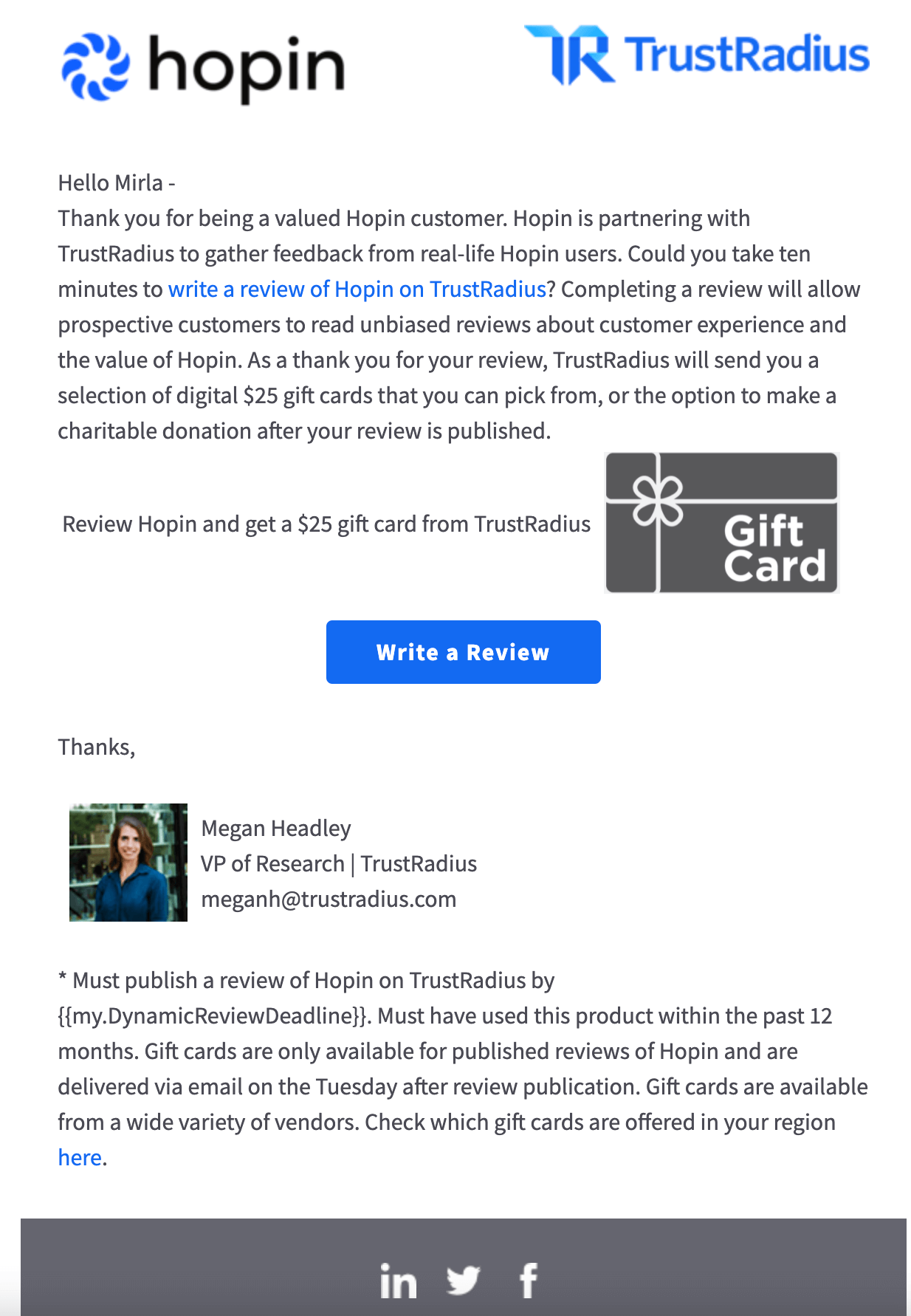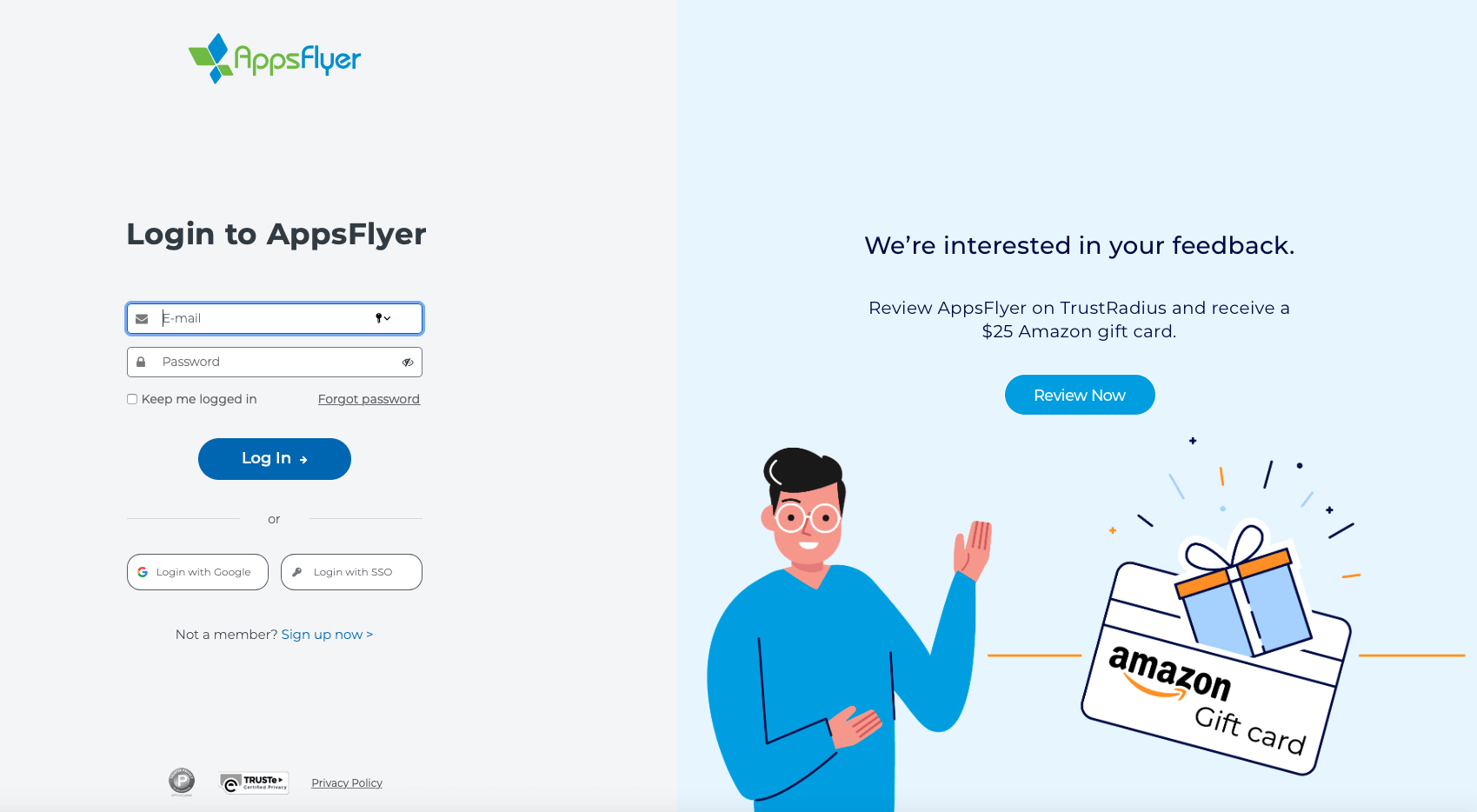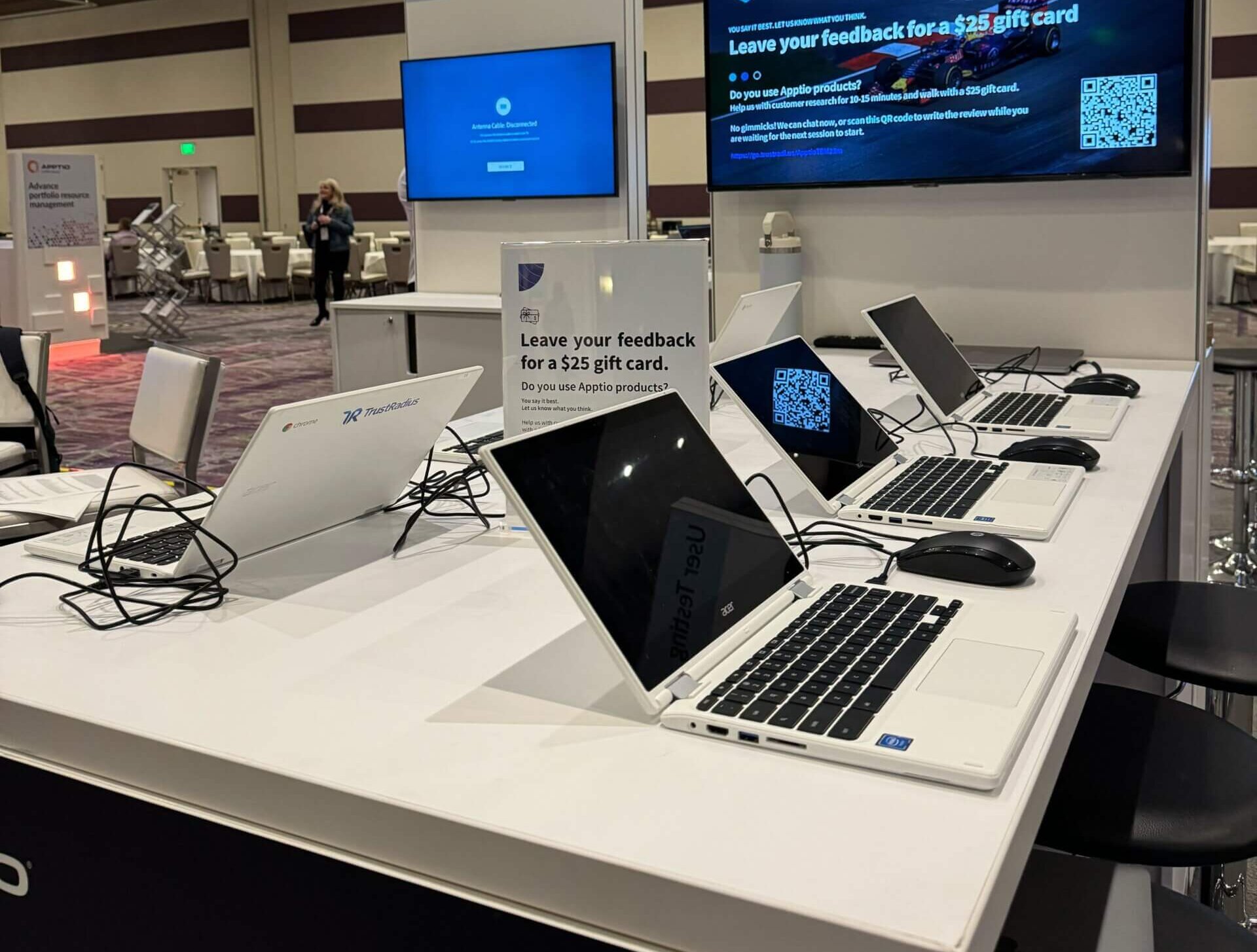How to Ask Customers for Reviews That Build Trust
Peep Laja, B2B tech industry influencer who has founded 3 companies, wrote, “B2B review marketplaces like G2 used to be useful. Now companies do an NPS survey and ask the 8+ people to write a ‘review’ for $100. So it’s all testimonials. Everyone is rated 4.5 and higher….as a review consumer – not useful.”
Frankly, consumers are savvy, and the jig of cherry-picking reviews has been up for a very long time. Consider the common behavior of checking one- or two-star reviews on Amazon first. Buyers—of books, coffee machines, workout gear, and yes, business technology—are looking for the gotchas, and know something’s off when there are only positive reviews.
And in the case of business technology, they’re going to keep digging. If customer reviews don’t help buyers feel like they’ll have no surprises when they choose your solution, then they’ll go to other sources: one-on-one interactions with people in their network, posts on Reddit, and other communities. Customer reviews are likely where they’ll start, but they won’t stop researching until they’re confident they know the full picture.
Thankfully, it’s not hard to make it easy for them. You can avoid cherry-picking pitfalls by following these dos and don’ts of inviting customers to leave reviews. When you achieve buyer confidence you’ll build a reputation of trust on TrustRadius, gaining:
- Stronger visibility on our platform thanks to trScore™, our proprietary algorithm that ensures cherry-picking doesn’t achieve its intended result of driving up scores
- Qualification for our most prestigious technology award, TRUE, which celebrates companies that are committed to ethical review practices
- Peace of mind that you’re on the right side of the FTC guidelines—we help ensure your review practices are ethical and also legal
So, if you want to have a more reputable brand in the channels buyers are known to conduct research about your product, it begins with an ethical review practice.
The dos and don’ts of collecting honest reviews buyers can trust
1. Invite a broad sample of your customers.
There are many channels for review asks. Choose one that allows you to reach a broad, unbiased audience. Make sure a representative sample of your customers contributes feedback on TrustRadius and your buyers will easily achieve the confidence they seek with just one stop.
Do:
- Set up a triggered email to all customers at a certain stage (e.g. six months after onboarding)
- Send an email to a random sampling of your customers, for example 25%
- Show an in-product prompt to a random slice of your users
Don’t:
- Invite only customers who respond to an NPS survey
- Rely on CSMs or AEs to invite customers to write a review
- Rely only on channels that may have a strong participation bias, such as newsletters, advocacy communities, social media, and even events depending on the level of participation
2. Ask for honest feedback.
Through neutral language, make it clear you’re looking for an honest review, not a testimonial. This approach has an added advantage of setting a better tone with your customer — that you’re listening and want to hear from them.
Do:
- “Write a review on TrustRadius.”
- “We’d love your feedback! Take a few moments to write a review on TrustRadius and we’ll send you XXX as a thank you for your time.”
- “You’re a {Product Name} expert. Share your expertise with other professionals evaluating our solution. Write a review on TrustRadius.”
Don’t:
- “Do you love our product? Take a few moments to share the love and write a review.”
- “Do you have positive things to say about {Product Name}? Say them on TrustRadius.”
- “We’re Top Rated on TrustRadius! Thanks for helping to make that happen. Write a review so we’re Top Rated next year.”
3. Make sure the offer is compelling.
There’s always a natural participation bias in technology reviews. Even when TrustRadius randomly invites professionals to review tools they use at work, 80% of reviewers rate the product an 8, 9, or 10 on a 10-point scale. But you need to avoid an extreme participation bias. This means you want to achieve at least a 3%-5% participation rate, meaning of the customers you invite, 3%-5% of them should end up with a published review.
The best way to do this is by offering an incentive. Small thank-you gifts actually drive a broader, less biased response.
Do:
- Make sure the audience actually sees the invitation
- Make the reward offer clear: “Write a review on TrustRadius, and we’ll send you a $25 Amazon gift card as a thank-you for your time.”
- Make good on the reward, of course!
Don’t:
- Tie the reward to a positive sentiment. Big no-no! This is against FTC regulations, against our site policy, and all around unethical
- Bury the reward aspect of the offer; make sure your audience understands the reward component so you get the yield you need
- Make the reward too big

If you’re a TrustRadius customer, we can handle the review generation and incentive fulfillment for you. But if you’re not, it’s ok for the reward offer to come from you directly. As long as it’s clear you’re asking for honest feedback, the results won’t be biased.
You’re on your way to making it super easy for your buyers to find answers, validate your marketing claims, and feel confident they’re making the right purchase decision. If you follow these three criteria, reach out to let our research team know so we can proactively validate your reviews as a representative sample.
If you need help collecting fair and unbiased reviews, check out our Review Growth Kit. It gives you everything you need to get started, in a very free kinda way.

















